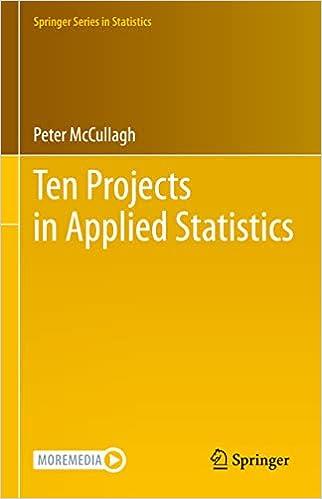For the non-seasonal frequencies, use (g operatorname{lm}()) to fit the additive exponential model [ Eleft(|hat{Y}(omega)|^{2}ight)=beta_{0}+beta_{1} exp left(-|2
Question:
For the non-seasonal frequencies, use \(g \operatorname{lm}()\) to fit the additive exponential model
\[
E\left(|\hat{Y}(\omega)|^{2}ight)=\beta_{0}+\beta_{1} \exp \left(-|2 \pi \lambda \omega|^{1 / 2}ight)
\]
for various values of \(\lambda\) in the range \(7-14\) days or \(0.02-0.04\) years. In this setting, the distributional family is Gamma, the link is identity, and the dispersion parameter is one. Plot the residual deviance against \(\lambda\) to find the maximum-likelihood estimate. Check that the fitted coefficients are non-negative. Superimpose the fitted curve on the graph of log-block-averages in the previous exercise. Plot the standardized residuals (log-ratio of observed to fitted) against frequency, and comment on any departures that are evident.
Data From previous Exercise
Use fft() to compute the Fourier coefficients for the temperature series on a whole number of years, identify and remove the frequencies that are seasonal, average the power-spectrum values in successive non-overlapping frequency blocks of a suitable size, and plot the log averages against the square root of the frequency in cycles per year.
Step by Step Answer:






